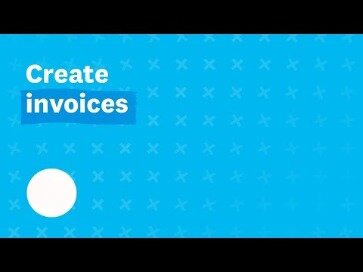
Finally, look for the transactions that are in the general ledger, but not on the statement, and vice versa. Do you need to record the bank fees or credit card interest in the general ledger? Add and subtract these as appropriate until you can get both sides to match. Next, match the entries in the general ledger with transactions on the statement. Adding to the challenge, sometimes an entry in the general ledger may correspond to two or more entries in a bank statement, or vice versa. These may pop out at the end, when everything else has been checked off.
- Upon further investigation, it is identified that four transactions were improperly excluded from the general ledger but were properly included in the credit card processing statement.
- Accounting software automation and adding a procure-to-pay software, like Planergy, can streamline the process and increase functionality by automatically accessing the appropriate financial records.
- Account reconciliation is particularly useful for explaining any differences between two financial records or account balances.
- Lastly, read-only access to BlackLine can be granted to auditors, eliminating the need to provide supporting documentation separately.
- These transactions represent instances where the information captured in the bank statement aligns precisely with the corresponding entries in the internal records.
Often the cash balance in the book of accounts and the bank accounts may not match. This could be due to many causes like missed entries, bounced payments, charges incurred, interest accrued, and much more. Then, go to the company’s ending cash balance and deduct from it any bank service fees, NSF checks and penalties, and add to it any interest earned.
Why Is Account Reconciliation Important?
New possibilities allow businesses to sell their products much more efficiently and reach a wider audience. And each subsequent software implementation, instead of getting easier, requires more time, more money, and more effort. And what if a document is missing or incomplete—a control issue for auditors to feast on. Every executive is committed to ensuring transformational success for every customer.
The customer reconciliation statement reveals mistakes or anomalies in the accounting for customers. Customer reconciliation is typically done at the end of the month, just before a business releases its monthly financial statements, as part of the account closing process. As CEO and Co-Founder, Mike leads FloQast’s corporate vision, strategy and execution. Prior to founding FloQast, he managed the accounting team at Cornerstone OnDemand, a SaaS company in Los Angeles.
If you haven’t already, find those missing records and repeat steps 1 and 2. Review and investigate each transaction with mismatches and speak with the department involved to determine why your records don’t match. Depending on the size of your business, there are multiple challenges you might face with reconciling accounts across your organization. Many of these challenges revolve around technical expertise and the number of records to reconcile. Not producing a reconciliation report when one is needed will also make it more time consuming to produce future reconciliations, due to it being harder to unpick the differences. For example, companies which sell goods will need to conduct a stock take to ensure that the inventory value in the balance sheet accurately reflects the value of goods held in storage.
For an accurate account reconciliation, an accountant needs to go through all the general ledger accounts to verify that there are no missing transactions and that the balance is right. The account reconciliation process keeps your business on track with its finances and different regulatory requirements. You might want to know where your money is going, how much you have left, and what to do with it. However, they can only do good when you reconcile the accounts properly. One of the challenges of a manual reconciliation process is accountability. With no automation around workflow and no reportability of status, it’s difficult to ensure policies are adhered to and work is being completed timely by the appropriate resources.
Record the receipts that you paid for using petty cash and make sure that your ending balance of cash is accurate. This transaction results in the bank’s assets decreasing by $1,000 and its liabilities decreasing by $1,000. But, if they happen too often and can’t be explained, this may indicate something’s not right with your books. In many companies, often a holiday period is given to customers during which the amounts due can be accrued as a liability. However, these sort of arrangements needs to be revisited, evaluated, and acted upon if required.
- Reconciliation is the process of comparing transactions and activity to supporting documentation.
- Reconciling your accounts is a great way to discover erroneous charges or financial irregularities on multiple bank accounts.
- These comments offer a space to capture important information that may not be evident from the numerical data alone.
- Differences between the records in the books and the actual cash in the bank account are called discrepancies.
Together, we provide innovative solutions that help F&A teams achieve shorter close cycles and better controls, enabling them to drive better decision-making across the company. BlackLine is a high-growth, SaaS business that is transforming and modernizing the way finance and accounting departments operate. We empower companies of all sizes across all industries to improve the integrity of their financial reporting, achieve efficiencies and enhance real-time visibility into their operations.
Comparing Accounting: Bank vs. Company
Our API-first development strategy gives you the keys to integrate your finance tech stack – from one ERP to one hundred – and create seamless data flows in and out of BlackLine. BlackLine Magazine provides daily updates on everything from companies that have transformed F&A to new regulations that are coming to disrupt your day, week, and month. Perform pre-consolidation, group-level analysis in real-time with efficient, end-to-end transparency and traceability. Reduce risk and save time by automating workflows to provide more timely insights.
For others, especially those who leverage financial automation tools, the entire process can be shaved down dramatically. Next, we look at how a bank uses debit and credit when referring to a company’s checking account transactions. Find direct deposits and account credits that appear in the cash book but not in the bank statement, and add them to the bank statement balance. Similarly, if there are deposits appearing in the bank statement but are not in the cash book, add the entries to the cash book balance. Also, transactions appearing in the bank statement but missing in the cash book should be noted.
Reconcile an account in QuickBooks Online
It then compares account balances between these sources, and identifies any discrepancies so they can be investigated by accounting staff. This removes the burden of manually performing this task, and frees accountants to focus on analyzing discrepancies. They may be caused by a variety of factors including timing differences, missing transactions, or mistakes. To sustain timely performance of daily activities, banking and financial services organizations are turning to modern accounting and finance practices. When you have all your data in one place, comparing accounts and spotting errors is easier.
Some of the transactions affected may include ATM service charges, check printing fees. Documentation review is the most commonly used account reconciliation method. It involves calling up the account detail in the statements and reviewing the appropriateness of each transaction. The documentation method determines if the amount captured in the account matches the actual amount spent by the company.
Using a double-entry accounting system, as shown below, she credits cash for $2,000 and debits her assets, which is the equipment, by the same amount. For her first job, she credits $500 in revenue and debits the same amount for accounts receivable. In simplest terms, reconciling your account is determining how much money your business has in general checking. To do this, it’s important for your business to keep records of each and every transaction that occurs to compile a reconciliation report.

Account reconciliation compares third-party and independent financial statements and records with internal financial records and ledgers. Accountants perform account reconciliations to ensure that documents from all relevant sources are correct and complete. For example, you can determine the accuracy of your balance sheet through account reconciliation because you are checking the balance sheet against the bank’s records.
Account Reconciliation
Automation software spares you the inefficient and tedious work involved in account reconciliation. Account reconciliation allows you to identify potential errors like misapplied payments and take action. Companies tend to invest in some projects or for taxation purposes or due to many other reasons. Periodic Offset Account in Accounting accounts reconciliation will ensure that the true value of the investments is reflected in the book of accounts. In this section, we look at some more examples of accounts reconciliation to understand the scope of work involved in accounts reconciliation and the tools that can help ease the process.
Let’s say you’ve been drooling over the latest model widget polisher for your business. The local dealer offers you a special price, and you can get this deluxe $12,000 machine for just $8,000 today. According to your online bank balance (which you rely on to monitor your cashflow because your accounting software never seems to be quite up to date), you have $10,000 in the bank. You sign on the dotted line, and waltz out with your new widget polisher. Perhaps the Excel spreadsheet you used to calculate the journal entry has a formula error. Some or all of these will happen at some point in the life of every business.
Keeping your business finances in order is critical for proper business functioning. To make sure that your books are accurate, you will have to rely on reconciliation accounting. The aid of technology and automation tools have made reconciliation accounting more accurate and more accessible to do than ever before. Monthly balance sheet reconciliation is necessary to review a business’ financial health consistently.
How Long Does a Month-End Close Take?
Learn how FloQast helped Zoom overall its month-end Close process and offer new visibility for leadership following a successful IPO. Learn how to optimize existing processes, collaborate efficiently, and provide more value to your organization. She uses $2,000 that she has in her personal savings to purchase equipment. She then uses the equipment to complete her first lawn-care project, which pays her $500.
